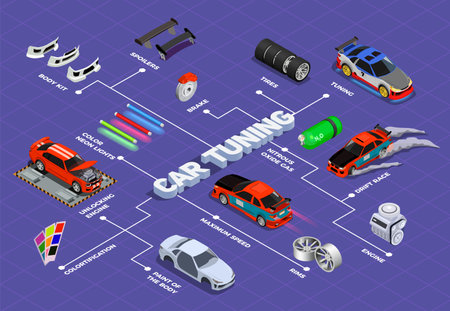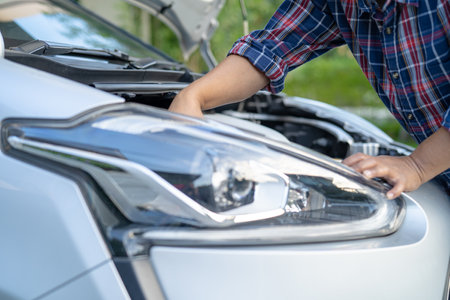1. Introduction
When it comes to upgrading your car’s suspension, two popular options that often come up are coilovers and lowering springs. Both offer a way to enhance your vehicle’s handling, appearance, and overall performance, but they serve different purposes and come with their own advantages and drawbacks.
Car enthusiasts opt for suspension upgrades for several reasons. Some want improved cornering ability, others seek a lower ride height for a more aggressive stance, and many are looking for a combination of both. But choosing between coilovers and lowering springs can be challenging if you’re not sure what each option offers.
Why Upgrade Your Suspension?
The stock suspension setup in most vehicles is designed to provide a balance between comfort and performance. While this works well for daily driving, it’s not always ideal for enthusiasts looking for better handling, reduced body roll, or a sportier feel. That’s where suspension upgrades like coilovers and lowering springs come into play.
Coilovers vs. Lowering Springs at a Glance
Before diving into the details, here’s a quick comparison between coilovers and lowering springs:
| Feature | Coilovers | Lowering Springs |
|---|---|---|
| Adjustability | Fully adjustable (ride height, damping, rebound, etc.) | Fixed height reduction |
| Performance | Better handling, cornering stability, and customization | Improved handling but limited adjustability |
| Comfort | Typically firmer, but some models allow for softer settings | Generally maintains ride comfort, but can be stiffer |
| Cost | More expensive due to advanced features | More affordable and easier to install |
| Best for | Track use, aggressive stance, full control over suspension | Daily driving, mild suspension upgrades |
Understanding the differences between these two suspension upgrades will help you make an informed decision on which one is right for your car. In the following sections, we’ll break down the pros and cons of coilovers and lowering springs to help you decide which is the best fit for your driving style and goals.
2. What Are Coilovers?
Coilovers are a popular suspension upgrade for car enthusiasts looking to improve handling, stance, and ride quality. The name “coilover” comes from “coil-over shock,” which means that the coil spring is mounted over the shock absorber as a single unit. Unlike stock suspension or lowering springs, coilovers allow for more adjustability, giving you greater control over your vehicles ride height and performance.
Components of Coilovers
Coilovers consist of several key components that work together to provide better suspension performance:
- Shock Absorber: Controls the movement of the suspension, reducing bouncing and improving stability.
- Coil Spring: Works with the shock absorber to absorb road impacts and maintain ride height.
- Adjustable Perches: Allow for fine-tuning of the ride height and preload.
- Camber Plates (on some models): Enable adjustment of the camber angle for better wheel alignment.
Benefits of Coilovers
There are many advantages to using coilovers over other suspension upgrades:
| Benefit | Explanation |
|---|---|
| Adjustable Ride Height | With coilovers, you can raise or lower your car to achieve the perfect stance. |
| Improved Handling | Coilovers provide better cornering performance by reducing body roll and improving stability. |
| Customizable Stiffness | Many coilovers allow damping adjustments to fine-tune comfort and performance. |
| Better Weight Distribution | By adjusting preload and damping settings, you can optimize suspension balance. |
Drawbacks of Coilovers
While coilovers offer great benefits, they do come with some downsides:
- Cost: Coilovers are typically more expensive than lowering springs, making them a bigger investment.
- Complex Installation: Installing coilovers requires more time, effort, and in some cases, professional setup.
- Stiffer Ride: Depending on the coilovers, ride comfort may be compromised compared to stock suspension.
- Regular Maintenance: Coilovers may need occasional adjustments and maintenance to ensure optimal performance.
If youre looking for maximum adjustability and performance, coilovers are a great option. However, they require careful selection and proper setup to get the best results.

3. What Are Lowering Springs?
Lowering springs are a popular suspension upgrade for those looking to improve their vehicles handling and aesthetics without the complexity of a full coilover system. These springs replace your factory springs and are designed to lower the car’s ride height by a set amount, typically ranging from 1 to 2 inches.
How Do Lowering Springs Work?
Lowering springs work by reducing the distance between the car’s body and the ground. They achieve this by being shorter and stiffer than stock springs, which lowers the center of gravity and enhances cornering stability. Since they are installed using the factory shock absorbers, they maintain a relatively simple and budget-friendly approach to suspension tuning.
Advantages of Lowering Springs
Lowering springs offer several benefits for car enthusiasts seeking better performance and aesthetics.
- Affordability: Lowering springs are much cheaper than coilovers, making them an attractive choice for budget-conscious enthusiasts.
- Improved Handling: By lowering the center of gravity, these springs help reduce body roll during cornering.
- Simple Installation: They are relatively easy to install compared to coilovers and work with stock shock absorbers.
- Aesthetic Improvement: With a lower stance, the car looks sportier and more aggressive.
Disadvantages of Lowering Springs
Despite their benefits, lowering springs also have some drawbacks to consider.
- Fixed Ride Height: Unlike coilovers, lowering springs provide a set drop with no adjustability.
- Possible Ride Comfort Issues: Stiffer springs can lead to a harsher ride, especially if mismatched with factory shocks.
- Increased Wear on Stock Shocks: Factory shocks are not always designed for lower springs, leading to faster wear.
- Limited Performance Gains: While they improve handling, they don’t provide the same level of customization and adjustability as coilovers.
Lowering Springs vs. Coilovers: Quick Comparison
| Feature | Lowering Springs | Coilovers |
|---|---|---|
| Cost | More affordable | More expensive |
| Adjustability | Fixed ride height | Height and dampening adjustable |
| Installation | Easier, works with factory shocks | More complex installation |
| Performance | Better handling than stock, but less than coilovers | Superior handling and customization |
| Ride Comfort | Stiffer ride, may feel harsher | Adjustable for comfort or stiffness |
4. Key Differences: Coilovers vs. Lowering Springs
When deciding between coilovers and lowering springs, its essential to understand their key differences in terms of adjustability, performance, cost, ride comfort, and installation complexity. Below, we break down each factor to help you make the best choice for your vehicle.
Adjustability
One of the biggest advantages of coilovers is their adjustability. Most coilovers allow you to fine-tune ride height, damping stiffness, and sometimes even camber. Lowering springs, on the other hand, offer a fixed drop with no adjustability.
| Feature | Coilovers | Lowering Springs |
|---|---|---|
| Ride Height Adjustment | Yes, fully adjustable | No, fixed drop |
| Damping Adjustment | Yes, on many models | No |
| Camber Adjustment | Some models | No |
Performance
Coilovers provide superior handling and allow for precise suspension tuning, making them ideal for performance driving and track use. Lowering springs improve handling by reducing body roll but don’t offer the same level of customization.
| Performance Aspect | Coilovers | Lowering Springs |
|---|---|---|
| Handling Improvement | High | Moderate |
| Body Roll Reduction | Excellent | Good |
| Track Use Capability | Yes | Limited |
Cost
Lowering springs are much more affordable, making them a budget-friendly option. Coilovers, while more expensive, provide additional features that justify the cost for enthusiasts seeking better performance and adjustability.
| Cost Factor | Coilovers | Lowering Springs |
|---|---|---|
| Price Range | $$$ – $$$$ | $ – $$ |
| Value for Performance | High | Moderate |
Ride Comfort
Lowering springs generally retain a more comfortable ride, as they are designed to work with stock or OEM-style shocks. Coilovers, depending on their stiffness settings, may produce a harsher ride, especially on rough roads.
| Ride Comfort | Coilovers | Lowering Springs |
|---|---|---|
| Comfort Level | Varies (adjustable but firmer) | Generally more comfortable |
| Daily Driving Suitability | May be stiff | Good for daily use |
Installation Complexity
Lowering springs are simpler to install and can often be fitted using stock struts. Coilovers require more effort as they need proper adjustment and alignment after installation.
| Installation Factor | Coilovers | Lowering Springs |
|---|---|---|
| Installation Difficulty | Moderate to difficult | Easy to moderate |
| Alignment Required? | Yes | Recommended |
| Time to Install | Longer (adjustments needed) | Shorter |
5. Which Suspension Upgrade Is Right for You?
Choosing between coilovers and lowering springs depends on your driving goals, budget, and personal preferences. Both options offer distinct benefits, so it’s important to consider what you want from your suspension upgrade.
Finding the Right Setup Based on Your Driving Goals
Daily Driving and Comfort
If you primarily use your car for commuting or casual drives, lowering springs can provide a more comfortable ride while giving you a sportier stance. They maintain a near-factory ride quality, making them a great choice for daily driving.
Performance and Track Use
For those who enjoy spirited driving or occasionally take their car to the track, coilovers offer adjustability that allows you to fine-tune suspension settings for better handling. Features like dampening and ride height adjustment give more control over driving dynamics.
Show Cars and Aesthetics
If your priority is appearance, both options work well, but coilovers provide more flexibility in fine-tuning your car’s stance. If you need an aggressive drop while maintaining some ride quality, coilovers may be a better option.
Comparing Costs: Coilovers vs. Lowering Springs
Budget plays a big role in choosing the right suspension upgrade. Heres how the two compare in terms of cost:
| Factor | Coilovers | Lowering Springs |
|---|---|---|
| Initial Cost | Higher ($800-$2000+) | Lower ($150-$500) |
| Installation | More complex, may require professional installation | Easier to install, lower labor costs |
| Adjustability | Fully adjustable height and dampening | Fixed height with no dampening adjustment |
| Long-Term Investment | Offers better value for tuners and enthusiasts | Affordable upgrade for anyone on a budget |
Personal Preferences: What Matters Most to You?
Adjustability vs. Simplicity
If you prefer a simple, no-hassle upgrade, lowering springs are the way to go. They’re affordable and easy to install. However, if you like to adjust and fine-tune your ride height and dampening settings, coilovers provide greater control over suspension performance.
Ride Comfort vs. Performance
Coilovers generally offer a stiffer ride, while lowering springs retain much of the factory comfort. If ride comfort is a high priority, lowering springs are the better choice. If youre looking for performance, handling, and adjustability, coilovers are the best option.
Final Thoughts
The right suspension upgrade depends on your specific needs. If you want a budget-friendly way to lower your car with minimal hassle, go for lowering springs. If you need adjustability for performance or stance, coilovers are worth the extra investment. Consider your goals and budget before making a decision.


